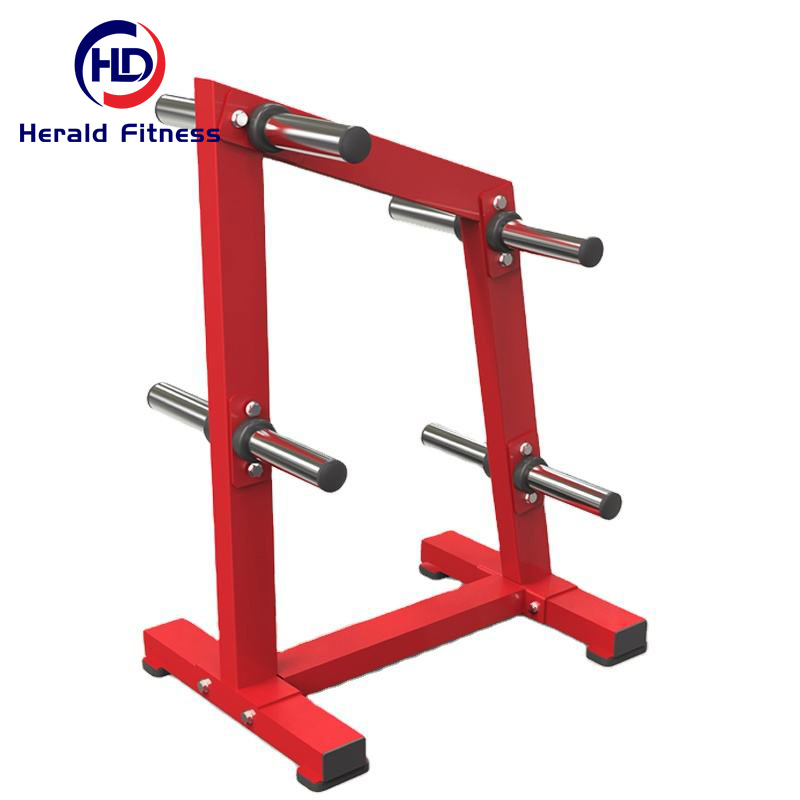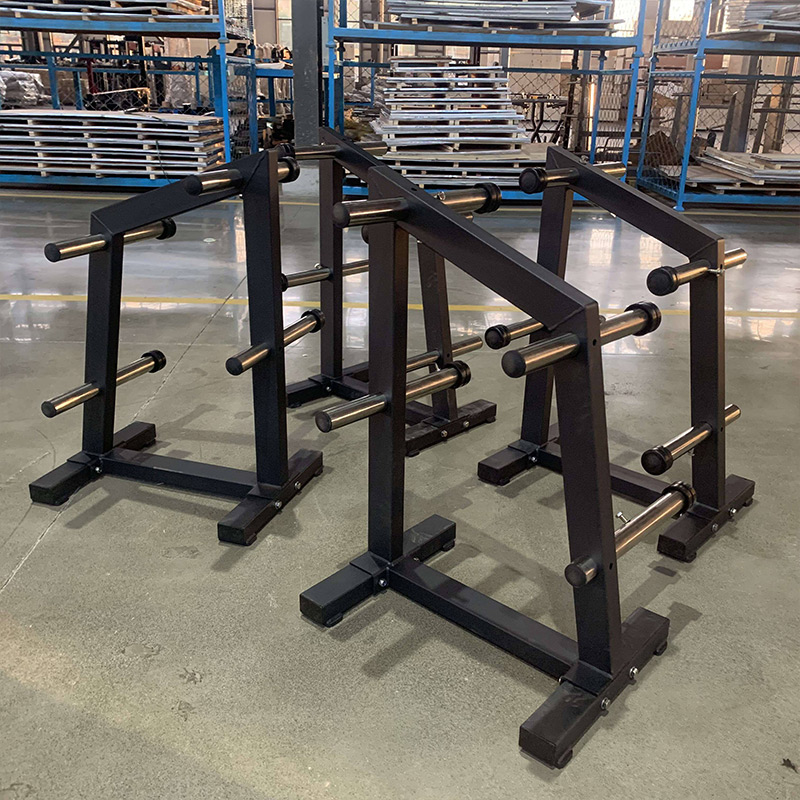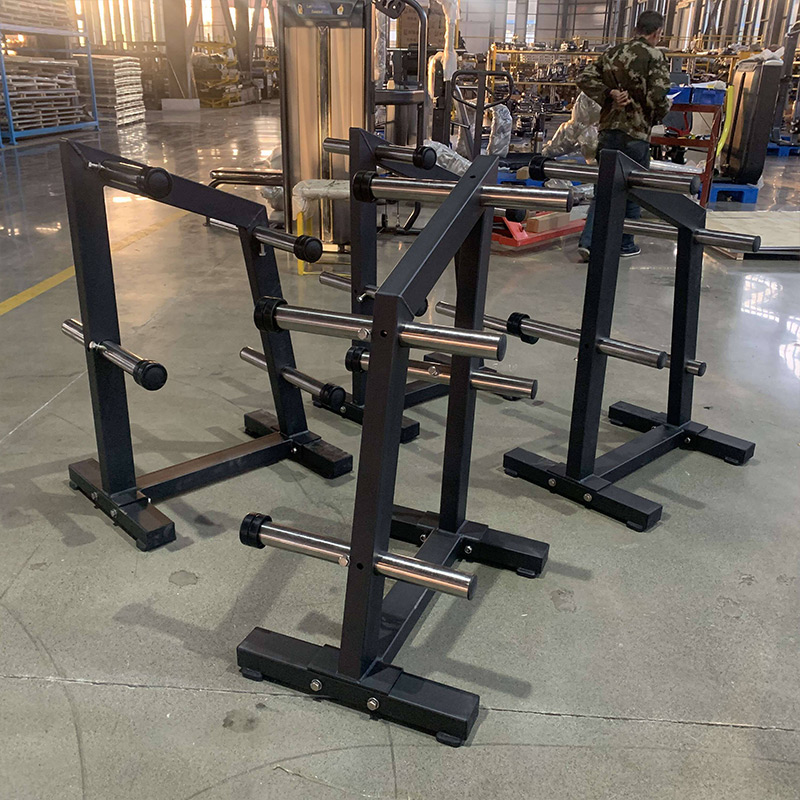A weight plate tree, also known simply as a plate rack or weight plate holder, is an essential piece of equipment found in gyms and home fitness setups. Its primary function is to organize and store weight plates used with barbells, dumbbells, and other weight-training equipment. Here’s a detailed description of its features and purpose:
- Structure and Design:
- Frame: Typically constructed from sturdy steel or another durable material to support the weight of multiple plates.
- Vertical Posts: These are vertical rods or posts that hold the weight plates in a stacked manner.
- Base: Often has a wide base for stability, ensuring it remains upright and secure even when fully loaded with plates.
- Hooks or Pegs: These are attachments where weight plates are placed or hung. They may have rubber or plastic sleeves to protect the plates from scratching and to provide a secure grip.
- Organization and Storage:
- Plate Size Compatibility: Weight plate trees are designed to accommodate plates of various sizes and weights, including Olympic plates (2-inch diameter center hole) and standard plates (1-inch diameter center hole).
- Easy Access: Plates are stored in a vertical arrangement, making it easy for users to quickly access and retrieve the plates they need during workouts.
- Space Efficiency: Helps in organizing gym spaces or home gyms by keeping weight plates neatly stacked and off the floor, reducing clutter and the risk of accidents.
- Benefits:
- Safety: By storing plates on a weight plate tree, you minimize the risk of tripping over loose plates on the floor.
- Convenience: Provides a convenient way to organize plates according to weight increments, facilitating smoother transitions between exercises during workouts.
- Preservation: Helps protect the weight plates from damage such as scratches and dents that can occur when plates are stored improperly or in a disorganized manner.
- Variations:
- Single vs. Multiple Posts: Some weight plate trees have a single vertical post, while others may have multiple posts for better organization or to accommodate more plates.
- Additional Storage: Some models may include additional hooks or shelves for storing smaller weightlifting accessories such as collars, resistance bands, or lifting belts.
- Considerations:
- Weight Capacity: Ensure the weight plate tree can support the total weight of your plates without tipping over or becoming unstable.
- Durability: Look for a well-built structure that can withstand the weight and usage over time without bending or warping.
- Footprint: Consider the size and footprint of the weight plate tree, especially if space is limited in your gym or workout area.
In summary, a weight plate tree is a practical and essential piece of equipment for any gym or home fitness setup where weight training is a regular part of the workout routine. It promotes organization, safety, and convenience by providing a designated storage solution for weight plates of various sizes and types.





















































Reviews
There are no reviews yet.